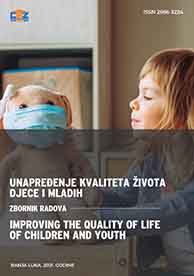DJECA POTENCIJALNE ŽRTVE TRGOVINE LJUDIMA - PREPOZNAVANJE I IDENTIFIKACIJA
CHILDREN OF POTENTIAL VICTIMS OF HUMAN TRAFFICKING - RECOGNITION AND IDENTIFICATION
Author(s): Samira HunčekSubject(s): Psychology, Sociology, Studies in violence and power, Victimology, Social Norms / Social Control
Published by: CENTAR MODERNIH ZNANJA
Keywords: children; sexual exploitation; protection; assistance; identification; referral mechanism;
Summary/Abstract: Trafficking in human beings not only affects the individual who is the object of committing a crime, but also has negative effects on the social and economic aspects of modern society, which is agreed by many authors who describe this phenomenon. Today, it involves several criminal acts of execution, the most important of which are: recruiting, transporting, transferring, hiding or accepting persons, using force, kidnapping, fraud and deceit, coercion, abuse of force, giving or receiving money or some other benefit to manage to another person for the purpose of exploitation. In the past, most of the activities aimed at investigating trafficking offenses have focused on cases of sexual exploitation. It is currently necessary to intensify activities on the investigation and prosecution of criminal offenses of trafficking in human beings for the purpose of forced labor, organized forced begging, arranged marriages as well as criminal offenses that may favor trafficking in human beings. In a more recent regional approach, the Council of Europe Convention on Action against Trafficking in Human Beings (Council of Europe Convention) extends protection under the Palermo Protocol to include internal trafficking in human beings. International standards clearly stipulate that trafficking in human beings is a violation of international norms, and oblige member states to take effective measures to prosecute perpetrators, protect victims and take preventive measures. The most common circumstances in which children are recruited for human trafficking may be as follows: socially and economically disadvantaged family; the family is from a rural area that relies on the financial assistance of children who are ready for work; these are children without parental care, children of divorced parents or children who have lost one or both parents as a result of the war; children are placed in institutions; come from a family where the parents are working abroad; come from a family with children with mental and physical disabilities; come from a family where the parents are addicted; come from a family without a registered residence (residence).In the event that these cases are detected, it is crucial to provide the victim with accommodation, safety and support, to work with the victim in terms of appropriate therapies and preparations for the continuation of the procedure and reintegration into normal social flows.
Journal: DRUŠTVENE DEVIJACIJE
- Issue Year: VI/2021
- Issue No: 6
- Page Range: 590-601
- Page Count: 12
- Language: Bosnian, Croatian, Serbian

